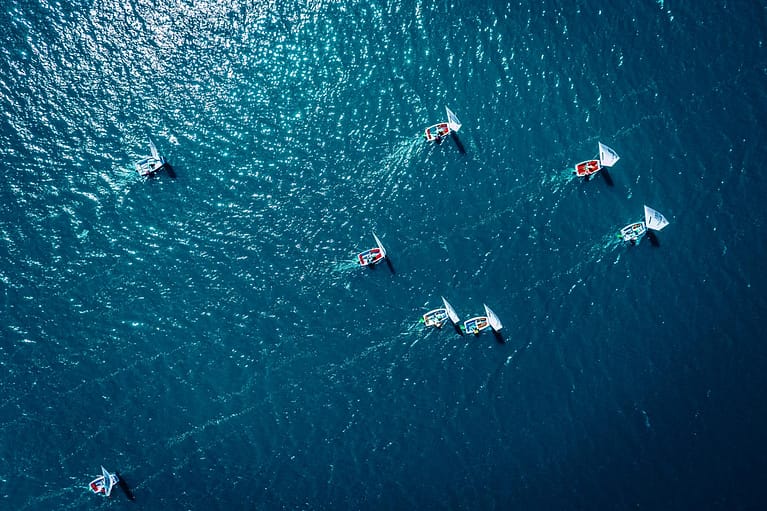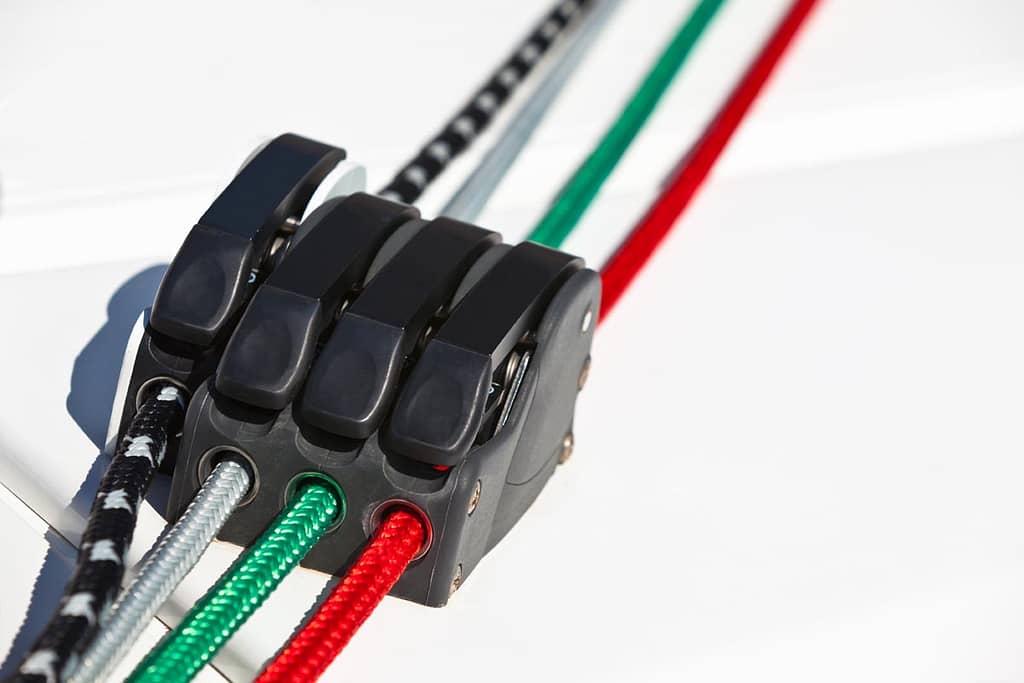Olympic Sailing: The Hope for Gold on the Open Ocean
Sailing is a thrilling sport. It combines wind and waves with the skill and strategy of the sailors. And when it comes to the ultimate test of sailing prowess, nothing beats the Olympics. In this article, we’ll dive into the exciting world of Olympic sailing. We’ll explore the basics of the sport, the boat classes, the rules, and the skills needed to succeed on the water.

Sailing Basics: How Does It Work and What Are the Key Terms?
At its core, sailing is all about harnessing the power of the wind to propel a boat forward. Sailors use sails to catch the wind and create lift, which moves the boat through the water. Some key terms to know:
- Tacking: Turning the boat’s bow through the wind to change direction
- Jibing: Turning the boat’s stern through the wind to change direction
- Upwind: Sailing against the wind
- Downwind: Sailing with the wind
Olympic Sailing Classes: Exploring the Different Boat Types
Olympic sailing has many boat classes. Each has unique traits and challenges. Some of the main classes include:
| Class | Description |
|---|---|
| Dinghy | Small, lightweight boats designed for one or two sailors |
| Keelboat | Larger, heavier boats with a fixed keel for stability |
| Catamaran | Fast, twin-hulled boats that can reach high speeds |
| Windsurfing | A surfboard with a sail attached, propelled by the wind |
Rules and Regulations: Understanding the Racing Format in Olympic Sailing
Olympic sailing follows strict rules. They ensure fair and competitive racing. Races are usually fleet races. In a fleet race, all boats in a class start together and race around a set course. There are also match racing and team racing events. They pit sailors against each other in head-to-head competition.
Sailing Techniques: Mastering the Wind and Waves for Success
To succeed in Olympic sailing, sailors need to master a variety of techniques and skills. Some key areas to focus on include:
- Upwind techniques: Sailing close to the wind for maximum speed and efficiency
- Downwind techniques: Using the spinnaker and other sails to catch the wind and surf the waves
- Tacking and jibing: Executing smooth and efficient turns to maintain speed and momentum
- Strategies for the start: Position the boat well for a good start. Then, gain an early advantage.
Olympic Sailing Courses: Discovering the Challenging Race Tracks
Olympic sailing courses test sailors’ skills and strategy. They do so in many conditions. Courses usually have upwind and downwind legs. They have markers and buoys to navigate around. Sailors need to consider factors. These include wind shifts, currents, and tides. They affect route planning and tactical decisions.

Sailing Equipment and Gear: What You Need to Get Started
To get started in sailing, you’ll need some basic equipment and gear. This includes:
- A boat (obviously!)
- Sails and rigging
- Personal flotation devices (life jackets)
- Wet suits or dry suits for cold weather
- Gloves, hats, and sunglasses for protection from the elements
Sailing Safety: Tips for Staying Safe on the Water
Safety is always a top priority in sailing. Some key tips to keep in mind:
- Always wear a life jacket
- Check the weather forecast before heading out
- Know your limits and don’t push beyond your skill level
- Have a communication device (like a VHF radio) in case of emergencies
Sailing Skills and Training: How to Improve Your Performance
To reach the elite level of Olympic sailing, sailors need to constantly work on improving their skills and technique. This can involve:
- Practicing in a variety of conditions and on different courses
- Working with coaches and mentors to identify areas for improvement
- Cross-training with other sports to build strength, endurance, and agility
- Studying tactics and strategy to outsmart the competition

Famous Olympic Sailors: Legends of the Sport and Their Achievements
Throughout the history of Olympic sailing, there have been many legendary sailors who have left their mark on the sport. Some notable names include:
- Ben Ainslie (Great Britain) is the most successful Olympic sailor ever. He won 5 medals (4 gold, 1 silver) across five Olympic Games.
- Robert Scheidt (Brazil): A five-time Olympic medalist (2 gold, 2 silver, 1 bronze) in the Laser and Star classes
- Paul Elvstrøm (Denmark) was the first sailor to win four gold medals in a row. He won them in four different classes from 1948 to 1960.
Sailing and the Environment: The Importance of Sustainability in the Sport
Sailing relies on the natural environment. So, it has a duty to promote sustainability and protect the oceans. Many sailors and groups are working to cut the sport’s environmental impact. They do this through initiatives like:
- Using eco-friendly materials and manufacturing processes for boats and equipment
- Implementing “leave no trace” policies at regattas and events
- Supporting ocean conservation and research efforts
Sailing in the Olympics: A Look at the History and Impact of Olympic Sailing
Sailing has been a part of the Olympic program since the first modern Games in 1896. Over the years, the sport has evolved and grown. New classes and formats were introduced to keep things fun and competitive. Today, Olympic sailing showcases the world’s best sailors. It is a testament to the lasting appeal of this timeless sport.

